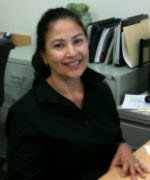
|
||
|
||
|
The Information Literacy Standards for Nursing1, promulgated by the ACRL (Association of College & Research Libraries), help to define what skills and knowledge are intrinsic to evidence-based practice and translational research in nursing. Standards Two (“The information literate nurse accesses needed information effectively and efficiently.”) and Three (“The information literate nurse critically evaluates the procured information and its sources, and as a result, decides whether or not to modify the initial query and/or seek additional sources and whether to develop a new research process.”) are the standards that I always find myself addressing as a rudimentary exercise since often my collection and the resources in it sit unused, detritus in the age of instant access to information. At least, this is what most students believe and what some faculty think. It is then, probably, no surprise to most librarians that students predominantly use the Internet as a “reliable” source of information. As a librarian and an informatics instructor in a small nursing college, I find students’ reliance on the Internet highly troublesome. I understand their thinking, that quick access to information in an intense learning environment saves them time and trouble. Many of the students believe “all information is equal” regardless of the source. Some of my students get indignant when I inform them that they may not use Wikipedia as a source. However, their indignation often segues into a conversation about the genesis of information and the variety of formats/sources available to them. This is where I usually suffer groans and a multitude of arguments defending Wikipedia or other sources on the Internet. I listen carefully and then ask the question: How are they to become competent professionals who are health literate and practicing the best clinical medicine on behalf of their patients if they do not understand how to locate, select, and evaluate their sources? I usually shift the discussion to a cursory explanation about how information becomes standardized and accepted as a knowledge base in a discipline. We often discuss the venues in which they can find the newest information in a discipline and where they will most often find that information presented -- usually around a theme at a conference. Conferences, however, do not present an organized body of knowledge and, at times, what is presented may be highly theoretical. We then trace how this information or theory may be put to the test -- this is where journals play a part. However, the caveat about journals, I tell them, is that in some estimates 60 - 90 percent of the information in journals or aggregated in a database may not be validated. I point out their best source of information, especially tried and true information, is in books, barring an evidence-based report. Of course, not everything follows such a simplified linear progression. I inform them that my expectation is that I should find on their reference list books as well as Internet sources for information that is dynamic. This is where the light bulb usually goes on for many of them, as I believe they want to serve their patients well, even if it means poring through my reference collection of books. Of course, they always ask, “When are you going to have them in electronic format?” |
||
| Copyright 2014 - Doody Enterprises, Inc. - All rights reserved |
